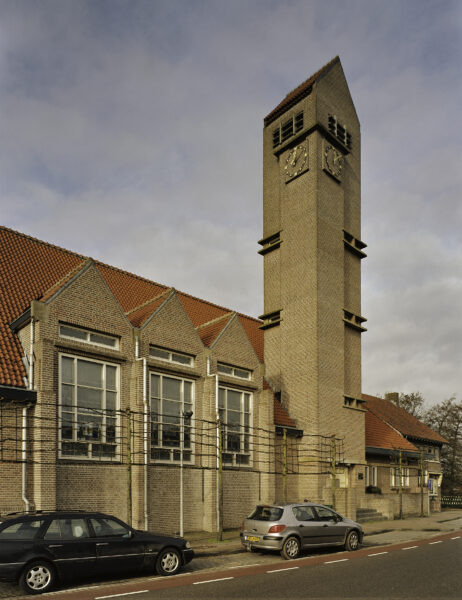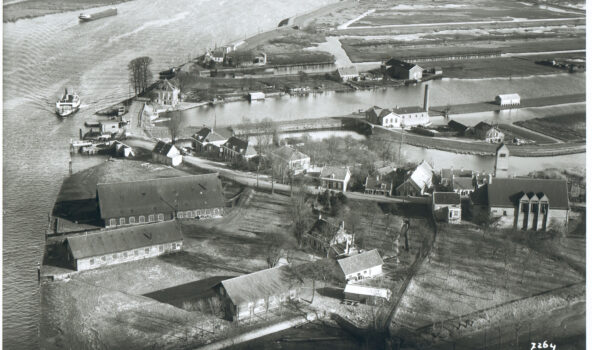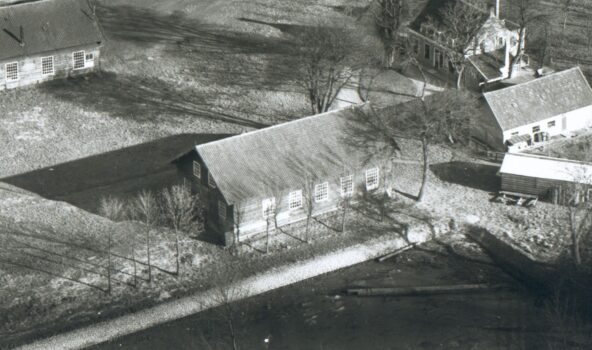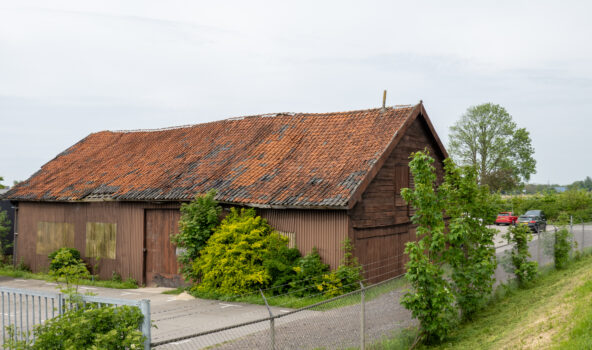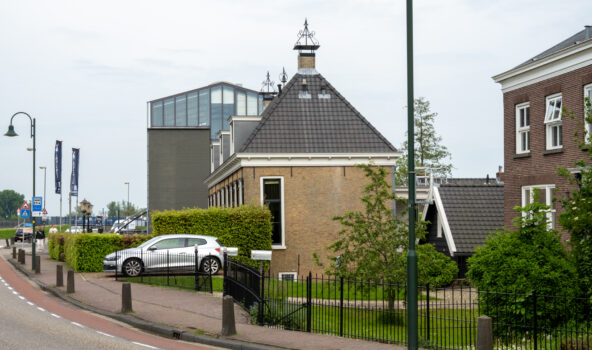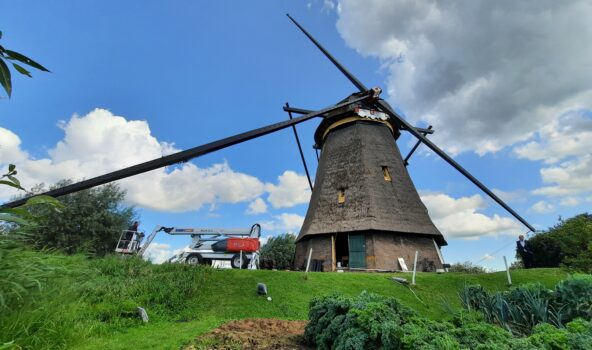BACKGROUND INFO
Pot Family
The Pot family was an influential one. With a rich history in shipbuilding and various shipyards, they had already amassed a considerable fortune. Members of the Pot family also held administrative positions, such as in the water board of the Nederwaard. Through this avenue, acquiring initial contracts must have been easier.
The mill sail factory with the riveted Pot Sail became a great success. This success was also well reflected. Family members resided in the magnificent house of the Nederwaard and the adjacent three stately homes. Through a bequest, a large donation was made to the village of Kinderdijk: Leendert Pot donated a completely new church building to Kinderdijk, so that people no longer had to travel to the nearby town of Nieuw-Lekkerland. This church, designed by Jan Wils of De Stijl, was realized in 1924 right next to the shipyard and still serves as the church of Kinderdijk.
Photo: Dukker, G.J, Rijksdienst voor Cultureel Erfgoed, Documentnummer 502.594
